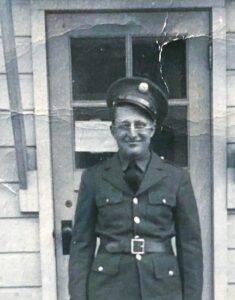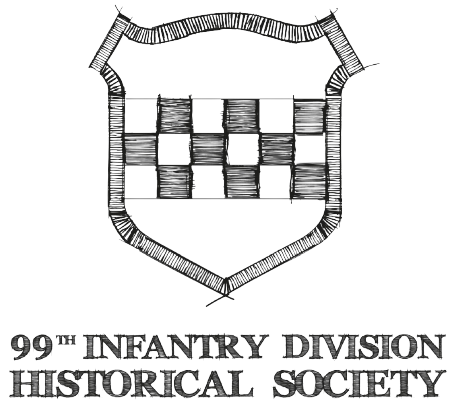
T/5 JOHN H. LONG, I CO. 394TH INFANTRY REGIMENT
Written by Jennifer Holik
http://wwiiresearchandwritingcenter.com
Photo source: All photos courtesy Jack Long.
Map source: 99th Infantry Division Unit Records, National Archives, College Park, MD.
John Harris Long was born on 18 September 1918 in Pittsburgh, Pennsylvania, the son of Walter and Kezia Long. He married Helen Butler prior to 1943, before he was drafted into military service. John’s military service consisted primarily of stateside training. He did not sail overseas until 13 February 1945, entered the unit as a Replacement Soldier, and sadly, was Killed In Action 13 March 1945 in Germany.
What follows is a brief summary of his training and military service prior to his death. Unfortunately, at the time this work was done for his son, the Individual Deceased Personnel File (IDPF) had still not been received. Additional details, beyond what his son sent me at the start of this project, surrounding his death, temporary and permanent burial are still to be determined.
SERVICE SUMMARY
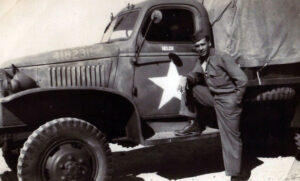
John reported for induction in the U.S. Army, at 8:00 a.m. on 11 June 1943, at the Old Post office Building in Pittsburgh, Pennsylvania. After induction he had a few days to prepare his affairs and report for duty at Camp Haan in California. Camp Haan was a training facility located in Riverside, California. It was specifically used for Anti-Aircraft Warfare. The men were trained in Coastal Artillery to shoot down enemy planes. Upon completion of basic training in July 1943, John was made a private and placed in Battery A 818th Anti-Aircraft Artillery Anti-Aircraft Warfare (AAA A/W Bn.) Battalion at Camp Haan California.
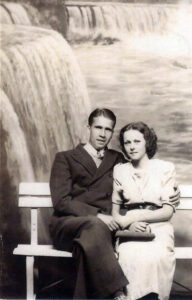
John remained in this unit until he was transferred into the IARTC (Infantry Advanced Replacement Training Center) located at Camp Howze, Texas. Because his Official Military Personnel File (OMPF) burned, only a few documents were located regarding his service. What was recovered do not show when he was moved from the 818th AAA A/W Bn to the IARTC.
On 7 January 1945, John was transferred from IARTC (Infantry Advanced Replacement Training Center) Camp Howze, Texas to AGF Replacement Depot No. 1, Fort George G. Meade, Maryland. John’s MOS or job, was changed to 745 (Rifleman.)
John reported for duty on 15 January 1945 at the AGF Replacement Depot at Fort George G. Meade. From Fort George G. Meade, the men in the Replacement Depot were transported by ship to the European Theater of Operations on 13 February 1945.
On 18 February 1945, John was transferred from the Headquarters 3rd Replacement Depot to I Company 394th Infantry Regiment of the 99th Infantry Division. He had been promoted in rank and was now a Technician Fifth Grade (T/5.) John’s MOS or job, was 745 (Rifleman.) The Company at this time, was stationed in Ondenval, Belgium.
BATTLE OF THE ERFT CANAL
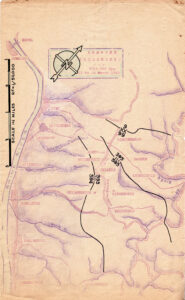
On 2 and 3 March, the company moved into defensive positions in this area and traveled by motor convoy a distance of about 29 miles. When they arrived in Garsdorf, they dug in for the night to await orders.
Between 2 and 9 March 1945, the Allied forces were engaged in the Battle of the Erft Canal as the Germans continued pulling back toward the east. The 394th Infantry Regiment participated in this battle beginning on 3 March. John’s battalion was originally in regimental reserve, but committed to action soon after the battle began. The Germans had left Panzer and Panzer Grenadier units in the area of the Erft Canal to stop the advancing Allies.
On 3 March, the regimental command post had moved to the vicinity of Glesch, Germany. As the Battle of the Erft Canal continued, the regiment fought and secured the towns of Allrath, Rath, Fraumeiler, Mouchauf, Gapsdorf, Ingenfeld, Vahiheim, and Rommerskeirchen.
The Erft Canal attack continued on the morning of 4 March as the regiment moved toward the Rhine River. I Company was in reserve during this point in the battle. On 4 March they moved by foot with the rest of the battalion of rifle troops toward the regimental command post near Anstel, Germany, on a cloudy, rain day. The regimental command post was situated in the vicinity of Anstel, Germany. The regiment encountered small arms fire, mortar fire, and SP Guns. The SP Gun was an armored assault vehicle, similar to a tank but without a rotating turret. 87 Prisoners of War were taken by the regiment at the end of the day as the regiment liberated the towns of Ukerath, Anstel, Gohr, Butzheim, Frixheim and Rheidt.
Between 5 and 7 March, the company moved by foot toward the new regimental command post in the vicinity of Gohr, Germany. They established an interior guard and one squad was sent to guard the prisoners captured by the battalion. The weather remained cold and rainy.
By 7 March, the regimental command post had moved to the vicinity of Horrem, Germany. At this time the company moved forward a quartering party to procure PX rations and distribute them among the company. The weather continued to be cold, cloudy and rainy. The regiment was doing so well, it continued its mission and captured the town of Neinenheim on the morning of 5 March. It was then assigned the mission to secure the Ukerath-Neinenheim area in Germany.
On 9 March, the regimental command post was situated in the vicinity of Leimersdorf, Germany. The company had moved by motor convoy approximately 70 miles and was located ¼ mile south of Nierendorf, Germany. The company remained dug into this position while it awaited further orders.
The mission for the regiment now, was to secure the Remagen Bridge in what was called The Battle of the Remagen Bridgehead. The battle was fought in two parts, the first from 11-26 March. It was during this time that John Long was Killed In Action.
THE REMAGEN BRIDGEHEAD
The 9th of March was a cold, cloudy day. The regiment was attached to the III Corps and moved into an assembly area at Stadt Meckenheim with other combat units, to prepare for enemy engagement. The regiment encountered enemy forces from 54 different units, according to official reports. Some of those units were the Anti-Aircraft units, replacements from a multitude or groups, members of the 26th VG Division with paratroopers from the 5th Paratroop Division, 57th Replacement Battalion and II/9 Landesschützen Battalion. The Engineer Battalion of the 5th Paratroop Division was supposed to blow up the bridge and all over and underpasses on the autobahn during the operation. Small pockets of resistance were easily cleared as the regiment advanced.
During the night of 10-11 March, the regiment was told to cross the Remagen Bridge. The company left Nierendorf to cross the Rhine River and was met with artillery fire. They encountered no enemy ground opposition until they reached a position 400 yards south of Ariendorf.
The Third Battalion, John’s battalion, fought in the southeast of Kasbach and captured the town of Leubsdorf with little resistance. After capturing Leubsdorf, the battalion continued pushing east. Reports for the division show the 394th Infantry Regiment as being attached to the 9th Division on 11 March.
From 11 – 13 March, the regiment continued moving east through hilly and heavily wooded terrain. Small arms machine gun fire and artillery fire were received with small skirmishes throughout the day on 12 March.
On 13 March, the company moved into attack position at 4 a.m. and were pinned down by enemy fired. They dug in and received heavy machine gun mortar artillery fire throughout the day. This was the last day John Long was seen. He was reported as Missing In Action on 13 March 1945, when he didn’t return to his command. This was the day he was Killed In Action.
On 17 March, the bridge did collapse, killing 28 American soldiers.
TEMPORARY BURIAL AND REPATRIATION
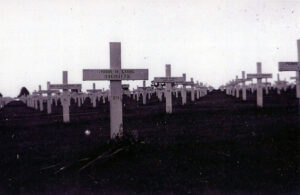
On 23 March 1945, John’s wife Helen received a letter from the Colonel of the 394th Infantry, J.R. Jeter, notifying her of the death of her husband Technician 5th Grade John H. Long, Company “I”, 394th Infantry, 99th Division. John was Killed In Action 13 March 1945.
The letter stated,
“My dear Mrs. Long:
I deeply regret that it is my most unpleasant duty to inform you that your husband, Technician 5th Grade John H. Long, 33693172, Company “I”, 394th Infantry, was killed in action in Germany 13 March 1945. The officers and men of his organization join me in extending to your our deepest sympathy.
Technician 5th Grade Long was buried in a military cemetery in Belgium. Normal battlefield services were held with a Chaplain of the Protestant Faith officiating at the funeral.
Your husband performed his duties in such a manner that you may well feel proud of him, and his loss is deeply regretted by his fellow servicemen. His service was a credit to himself and to his country.Again, let me repeat our sympathies are with you in this hour of sorrow.
Sincerely Yours,
J.R. Jeter
Colonel, Infantry
Commanding”
John’s remains were buried at Henri-Chapelle Cemetery No. 1, Aubel, Belgium. The grave was located at coordinates K 721-348, Grave No. 29, Row No. 2, Plot H 4. He was issued the Purple Heart, posthumously, for sacrificing his life in combat, on 29 May 1945.
In 1947, Helen received a letter asking about the disposition of the remains of her husband. She elected to have his remains brought back to the United States for burial. It was not until 1948 or 1949, that John’s remains were repatriated and he was buried in Pittsburgh, Pennsylvania with full a military burial service.
FOOTNOTES:
[1] Year: 1920; Census Place: Pittsburgh Ward 10, Allegheny, Pennsylvania; Roll: T625_1517; Page: 6B; Enumeration District: 476; Image: 450
[2] Reconstructed OMPF for T/5 John H. Long serial no. 33693172, Order to Report for Induction dated 27 May 1943, National Personnel Records Center, St. Louis, MO.
[2] Payroll record of Battery A 818th AAA A/W Bn. Dated July 1943. National Personnel Records Center, St. Louis, Missouri. The transfer in grade to Private based on Special Order #161 Hq AAATC Camp Haan, California dated 5 July 1943.
[3] Reconstructed OMPF for T/5 John H. Long serial no. 33693172, Special Orders Number 6 page 1, HQ Infantry Advanced Replacement Training Center, National Personnel Records Center, St. Louis, MO.
[4] Reconstructed OMPF for T/5 John H. Long serial no. 33693172, Special Orders Number 6 page 2, HQ Infantry Advanced Replacement Training Center, National Personnel Records Center, St. Louis, MO.
[6] Company Morning Report for I Co 394th Infantry Regiment 99th Division, dated 3 March 1945.
[7] History of the 394th Infantry Regiment 1-31 Mar 1945, p 3. National Archives, College Park, MD.
[8] History of the 394th Infantry Regiment 1-31 Mar 1945, p 1. National Archives, College Park, MD.
[9] History of the 394th Infantry Regiment 1-31 Mar 1945, p 4. National Archives, College Park, MD.
[10] Company Morning Report for I Co 394th Infantry Regiment 99th Division, dated 4 March 1945. History of the 394th Infantry Regiment 1-31 Mar 1945, p 1. National Archives, College Park, MD.
[11] History of the 394th Infantry Regiment 1-31 Mar 1945, p 4. National Archives, College Park, MD.
[12] History of the 394th Infantry Regiment 1-31 Mar 1945, p 1. National Archives, College Park, MD. Company Morning Report for I Co 394th Infantry Regiment 99th Division, dated 5-6 March 1945.
[13] History of the 394th Infantry Regiment 1-31 Mar 1945, p 1. National Archives, College Park, MD.
[14] Company Morning Report for I Co 394th Infantry Regiment 99th Division, dated 7 March 1945.
[15] History of the 394th Infantry Regiment 1-31 Mar 1945, p 4. National Archives, College Park, MD.
[16] History of the 394th Infantry Regiment 1-31 Mar 1945, p 2. National Archives, College Park, MD.
[17] Company Morning Report for I Co 394th Infantry Regiment 99th Division, dated 9-10 March 1945.
[18] History of the 394th Infantry Regiment 1-31 Mar 1945, p 4. National Archives, College Park, MD.
[19] The Remagen Bridgehead, March 7-17 1945 (http://www.allworldwars.com/The%20Remagen%20Bridgehead%20March%201945.html#1 : accessed 6 Aug 2015.)
[20 History of the 394th Infantry Regiment 1-31 Mar 1945, p 4. National Archives, College Park, MD.
[21] Company Morning Report for I Co 394th Infantry Regiment 99th Division, dated 11 March 1945.
[22] History of the 394th Infantry Regiment 1-31 Mar 1945, p 5. National Archives, College Park, MD.
[23] Detachment. 99th Division History ( http://www.history.army.mil/documents/ETO-OB/99ID-ETO.htm : accessed 6 Aug 2015.)
[24] Company Morning Report for I Co 394th Infantry Regiment 99th Division, dated 17 March 1945.
[25 Reconstructed OMPF for T/5 John H. Long serial no. 33693172, Special Orders Number 6 page 1, HQ Infantry Advanced Replacement Training Center, and Letter from 394th Infantry Commanding Officer to Helen Long dated 23 March 1945, National Personnel Records Center, St. Louis, MO.
[26] Reconstructed OMPF for T/5 John H. Long serial no. 33693172, Letter from Helen to the Quartermaster General dated 8 August 1945, National Personnel Records Center, St. Louis, MO.
[27] Reconstructed OMPF for T/5 John H. Long serial no. 33693172, Purple Heart certificate dated 29 May 1945, National Personnel Records Center, St. Louis, MO.
[28] Reconstructed OMPF for T/5 John H. Long serial no. 33693172, Letter from Quartermaster General to Helen Long dated 24 March 1947, National Personnel Records Center, St. Louis, MO.

